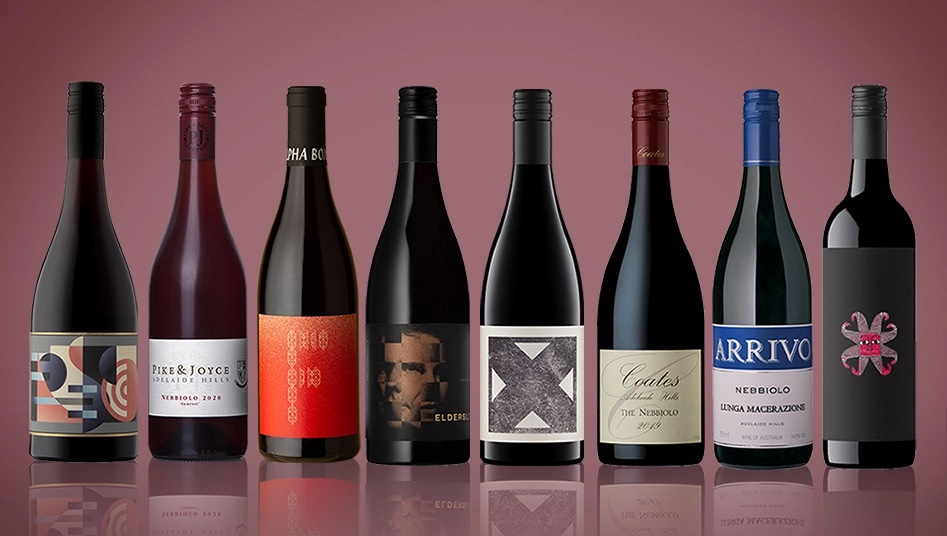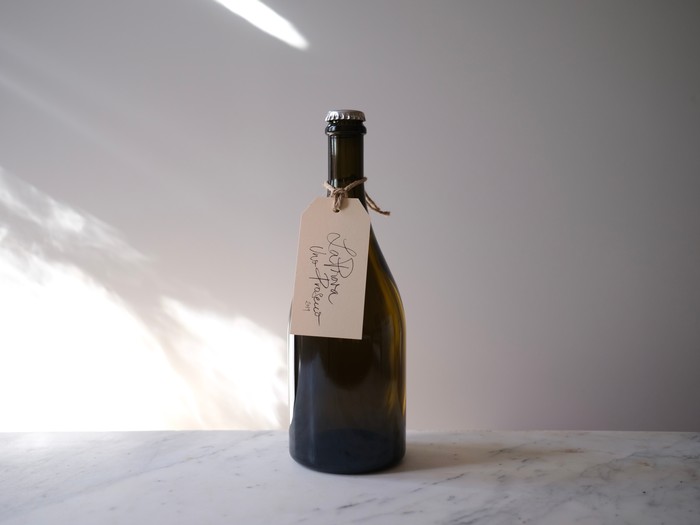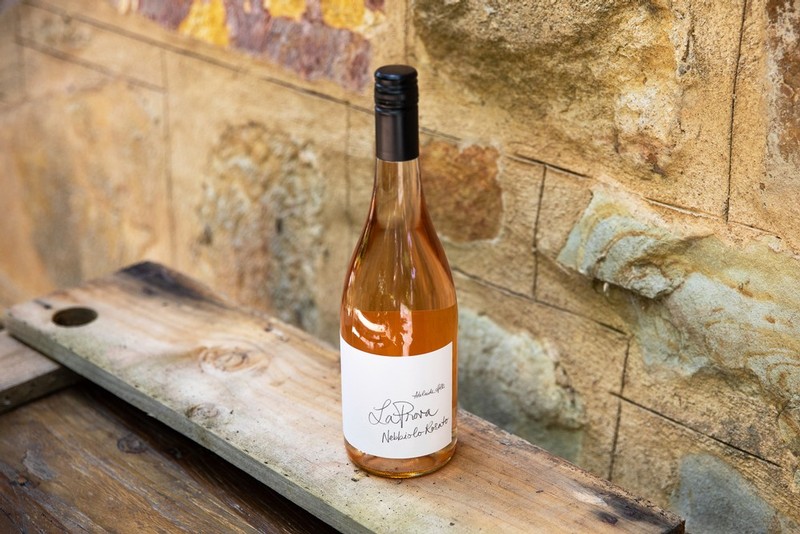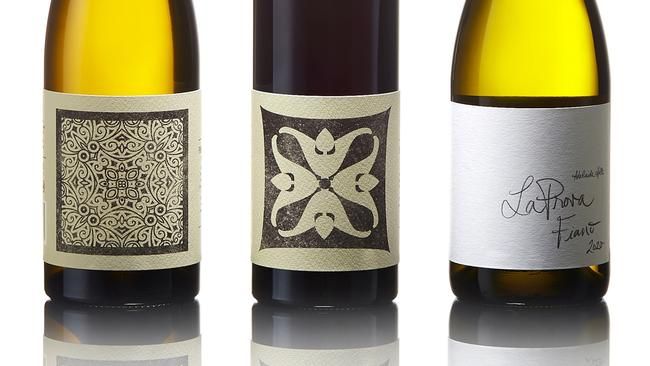Posted on Dec 2, 2024
Some Great Acknowledgements During the Last Few Weeks.
Very pleased to announce two! trophies at the Adelaide Hills Wine Show 2024:
-
2024 La Prova Pinot Grigio - Best Pinot Gris/Grigio of the Show
-
2024 La Prova Aglianico Rosato - Best Rosé of the Show
Our 2023 La Prova Fiano found itself featured twice, in these excellent articles:
-
20 Best White Wines of the Year, Nick Ryan - The Weekend Australian Magazine
-
Five Fab Fianos to Try, Max Allen - Financial Review
Plus this from Mildura’s Alternate Varieties Wine Show headed up by Chief of Judges Leanne Altmann:
-
2024 La Prova Aglianico Rosato - Trophy, Best Rose
A big few weeks and a great way to round out 2024. Thanks for all your support!
The Italian star at home in the Adelaide Hills fog, by Tony Love
Been up in the Hills lately? The fogs through the higher points have been fairly persistent – though not that unusual for inhabitants and regular visitors.
They’re not just a mid-winter thing. Often the mist comes in during the shoulder seasons as well. Low clouds, too, are all part of the weather vibes of what we like to call our high country.
In wine vernacular, this is probably proof for many that the region’s tag of being cool-climate is legit, though in reality that’s more to do with what happens during grape-ripening season, when temperatures are a little lower generally than in less mountainous places, and drop dramatically once the sun goes down.
This allows the fruit to cool down and not over-cook, encouraging long, even flavours and plenty of retained acidity at harvest time which eventually translates to fresher, crisper and crunchier wine characters down the track.
Many grape varieties thrive in such conditions, among them the region’s classics such as Sauvignon Blanc, Chardonnay and Pinot Noir, the latter two as individual table wines and blended as sparklings.
Now there are many more newcomers settling into these same conditions. La Prova winemaker Sam Scott names five of them as the leading players: Gruner Veltliner, Tempranillo, Sangiovese, Nebbiolo and Fiano. There are lots of smaller plantings as well, such as Barbera, Dolcetto and Lagrein. Note – none of these originates in France.
“There’s a lot of demand for those varieties,” Scott says. “People want to drink them, restaurants and bars want to list them, and suddenly there are line-ups of winemakers wanting to make them, from what is currently a finite fruit source.”
All those varieties mentioned make up a tiny percentage of Adelaide Hills plantings – around the 5 per cent mark, but growing gradually every year.
One of the most engaging of these mostly Italian-origin varieties is the red grape Nebbiolo. Its home is in the north-western Piedmont region of Italy, in the foothills of the Alps, where the fogs come in during harvest time and often don’t lift till the end of vintage.
The Italian word for fog is “nebbia”, which of course suggests that’s where the grape variety’s name originates. Its fame comes from wines of the districts of Barolo and Barbaresco, the best of those now revered globally, imported here enthusiastically, and while nowhere near the stratospheric price points of grand cru Burgundy, they can fetch well into the hundreds of dollars per bottle for top current releases.
Winemakers here are clearly keen on the variety, mainly because they love its wine style – the dollars are irrelevant given what they all say is the degree of difficulty in growing it, and often the time needed in maturation before release.
Finding the right spots in the Hills is the key to managing some of those viticultural challenges, Sam Scott says. He sources his from the Macclesfield-based Longview Vineyard which has more than eight hectares planted to eight different clonal variations of Nebbiolo. The first of those were planted in 1995, making it some of the oldest in Australia. (In 2021 Longview supplied fruit to more than 12 producers, including themselves, but in 2022 the supply fell due to very low vineyard yields.)
“Nebbiolo has the earliest bud burst and ripens very late in the season, so the fruit is out on the vine for a long time and vulnerable in a sense to all the vagaries of the vintage’s weather,” Scott notes.
Maximising sunshine and finding warmer sites are important in cooler climes, but UV radiation here is different to Italy, he points out. These are key considerations given a certain challenge presented by Nebbiolo: the ripening of fruit sugars at the same pace as the “ripening” of seeds and stalks, which are the source, along with skins, of its trademark tannin profile.
One of Nebbiolo’s defining characters is its palate texture, marked by its tannin-derived drying sensation in the mouth as we drink.
The variety naturally possesses these in droves, which is one of the reasons why it garners attention in the restaurant trade, and increasingly with engaged wine consumers, many now seeking more than just big fruit explosions and oaky extraction.
Another intriguing factor with Nebbiolo is its typical lighter, more translucent colour in the glass, which might lead newcomers to the variety to think it’s a bit weak-kneed. It can be confusing, because the variety is far from that, possessing a hidden power and complex savoury characters.
These are the elements that have attracted winemaker Stephen Pannell to the variety, which he nurtures at the Protero vineyard in Gumeracha. He’s created wines there for its original owners since the early 2000s, and bought the property in 2019 to further explore the delights of Nebbiolo and other cool-climate white varieties released under the vineyard’s name.
Nebbiolo has made him think about what he likes about all wines, Pannell says.
“It’s not weight, it’s not density, and it’s not colour. It is perfume, it is lightness, it is elegance, and it is tannin.
“We are having more and more conversations these days about red grape varieties and phenolic characteristics (chemical compounds within the grape that affect a wine’s sensory expressions, like colour, density and tannin levels).
“It’s not just about the fruit and the aromatics of the wine variety. Each variety has very specific phenolic characters and specifically their resulting tannins.
“And now more than that – we see that tannins can have a flavour as well – they are not just drying, but we can see terracotta, leather, earth, those kinds of things.”
All this also adds meaning to the wine lexicon’s favourite new descriptor – “savoury”. In the most basic way, it’s anything outside the fruit sweetness box, anything that isn’t essentially berries and plums or peaches and nectarines, lemons or limes and so on. It’s way more complex than that, of course, but there’s a start.
In Nebbiolo territory, one of the ways to manage its natural tannin load is to macerate the harvested fruit with its skins for longer than most other varieties, during and after fermentation. Stephen Pannell sticks mostly to round the 25-day mark, though some parcels have gone as long as 109 days.
One of the pioneers of the variety in the Hills, Peter Godden with his Arrivo brand, also went as long as 72 days with his Arrivo Lunga Macerazione in 2009, which is still currently available, and arguably one of the crowning achievements so far in Australian-made Nebbiolo.
The technique is fraught with danger in terms of winemaking chemistry, but keeping the skins under the surface of the various vessels in use, stainless-steel tanks and larger, older oak barrels, is just the start of best practice in this instance.
The time on skins might seem counter-intuitive – you would imagine this turbo charges the tannin weight in a wine, but in fact, it softens the mouthfeel. Another of the mysteries of the variety.
The time factor seems to be everything with this variety.
“It’s a wine that is going to take time to understand,” Steve Pannell says. “How to make it, how to grow it, the restraint required in the winemaking, seed ripeness, yield and berry size – there are a whole lot of things that are odd with it.”
He has close to 20 years of experience with his vineyard and the variety, and he freely admits he’s still learning. Is it the right place – he’s still not even sure about that, though the wines he’s made from there tell otherwise.
“It’s certainly a journey with the variety,” he says. “It’s going to take time.
“But I hope more people plant Nebbiolo. It has a future.”
TASTING NOTE
La Prova Uno Nebbiolo “Colpevole” 2018
Adelaide Hills / 14.1% / $45
One of winemaker Sam Scott’s much loved Italian family of Italian varieties, this is sourced from the Longview Macclesfield vineyard. There’s plenty of focus here, two months of skins maceration just part of it. It’s fragrant, tarry, earthy with a great mix of cherry fruit and savoury elements, held together by its varietal tannins that are chewy but never blocky, willful but never heavy-handed, just as they should be. A lovely wine that celebrates all things Nebbiolo. La Prova also has a Rosato from the variety, the new 2022 vintage to be released soon.

Posted on September 25, 2020
La Prova Uno Prosecco is a new chapter in a decades-old family story
When Silvio Dal Cin planted the first Prosecco vines in Australia more than 20 years ago, he wasn’t motivated by the idea of introducing a new wine variety to his adopted country.
For Silvio - an Italian expatriate - his small vineyard was a way to connect with family and his roots. His parcel of land at Norton Summit was chosen because the region reminded him of Conegliano - his childhood home in Italy. On the site, he and his son hand-planted and hand-tended imported Prosecco cuttings, which were selected on the advice of Silvio’s sister-in-law - a Professore at the Conegliano School of Viticulture.
Two decades later – in a time where Prosecco has gone from obscure Italian variety to a staple of Australian wine menus - La Prova is privileged to work with the fruit grown in Silvio’s tiny but pioneering vineyard. The collaboration, which began in 2019, honours the original spirit of the Dal Cin plantings by setting aside half of the wine produced for Silvio’s family to enjoy.
The 2019 vintage was light yield, providing only enough fruit to create a highly limited selection of 62 bottles of La Prova Uno Prosecco. Made using basket pressing and wild-yeast fermentation in amphora, the wine was then racked and inoculated for a secondary fermentation in bottle, before spending three months on lees prior to disgorgement in February this year. The result is an extremely individual Prosecco with a low dosage that brings the chalkiness typical of the varietal forward.
The 2019 vintage is available soon, until sold out. The 2020 vintage release date will be announced later on.

We picked up Best Rosé at Halliday's 2022 Wine Companion Awards.
It gives us great pleasure to share the news that our 2020 La Prova Nebbiolo Rosato has won Best Rosé at the 2022 Wine Companion Awards, announced tonight.
This year, James Halliday and his tasting panel including Tyson Stelzer, Jane Faulkner, Erin Larkin, Jeni Port, Ned Goodwin MW and Tony Love, tasted more than nine thousand wines. To be one of just 16 bottles that represent the truest and most exceptional examples of their category, is so exciting.
Halliday Taster Tony Love said; Pink with copper tinges. The nose is a little earthy, along with its red fruits, and then you get a rush of crunchy, zingy red and white berries, a peppery spice and salivating finish, leaving the palate thirsty for more and more. Fantastic rosé. 95 Points.
Thank you, Tony. Thank you to all of the Halliday team! And congratulations to all finalists and winners. The new Halliday Wine Companion 2022 goes on sale tomorrow, Friday 13 August.

The making of La Prova wines, by James Halliday
Sam Scott’s wine education began with his great-grandfather, who worked in Penfolds’ winery with Max Schubert and passed his knowledge on to his son. At his grandfather’s knee, Scott absorbed wisdom and taste alike. While studying business at university he worked part-time with a Who’s Who of the Adelaide wine trade; the most influential was David Ridge, who imported Italian wines and sold to restaurants and retailers.
After working in many parts of Australia and in California, Scott started his own business in the Adelaide Hills in 2008. He initially used Scott Wines as the business name, but his interest in Italian varieties mushroomed, and more and more of the wines bore the La Prova label. In 2019 he decided to discontinue the Scott Wine label altogether and to only use Italian varieties.
All of the intake is contract-grown, all using sustainable vineyard practices, pesticide-free and with permanent mid-row grasses that reduce the amount of traffic and soil compaction. Beneficial insects are encouraged (partly by an insectarium), and by the absence of systemic sprays.
The seamless journey from vineyard to winery means that “the day you pick is the day you make your wine”, Scott says. He has trialled 16 varieties so far, and worked on the best interaction between given varieties and terroirs – so he’s stepped from the Hills to the Fleurieu Peninsula for pinot blanc, the King Valley for prosecco, and McLaren Vale for nero d’Avola.
Jancis Robinson lists 377 Italian grape varieties in production in her book Wine Grapes. Ian D’Agata’s 620-page book Native Wine Grapes of Italy (2014) points to researchers suggesting 1000 to 2000 varieties. Either way, Scott has a lifetime’s work to even scratch the surface of the pool of varieties. And then there are clones: there are already three of fiano in production.
2018 La Prova Zanzara Fleurieu Peninsula Pinot Bianco: 95 points, drink to 2024
Hand-picked, and whole-bunch-pressed directly to old French barrels for wild ferment. This is the most complex and interesting version of the normally bland pinot blanc I can remember. It floods the mouth with custard apple, lime zest and a slight beeswax feel. 13.3% alc, screwcap
2018 La Prova Piccolino Adelaide Hills Sangiovese: 95 points, drink to 2029
Above average colour for the variety. A cherry all-sorts bouquet leads into a complex texture on the palate, but the savoury/twiggy elements don’t emasculate the red (fresh and sour) cherry fruit. It’s a wine made for food. 14.2% alc, screwcap
2020 La Prova Adelaide Hills Fiano: 94 points, drink to 2023
Hand-picked, chilled, whole bunch-pressed; 60% fermented in stainless steel, 40% fermented on full solids in old oak. The fruit is thus allowed to add to fiano’s reputation for inherent texture and drive, yet with no phenolics to clutter the lingering finish and aftertaste midway between citrus and stone fruit. 13.5% alc, screwcap
